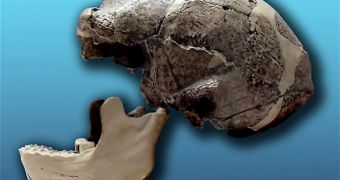During World War II, a large part of the Peking Man fossils that had been dug up decades before went missing. Remains were already extremely rare, and so scientists were left without any real-life fossil to study for decades. But now, a canine tooth belonging to this species was discovered in Sweden.
Researchers at the Uppsala University's (UU) Museum of Evolution discovered the tooth inside one of 40 cartons that were delivered to Sweden from China in the early 20th century. Following a series of events, the cartoons were forgotten about, and left in storage at the museum.
After museum director Jan Ove Ebbestad drew attention to the existence of the cartons, he and experts Per Ahlberg and Martin Kundrát opened them. One of the boxes contained an yet-unprocessed canine tooth that belonged to a Peking Man specimen.
The earliest fossils of this primate species were uncovered in the 1920s in China, and Swedish researchers were among the first international partners to be involved in uncovering them. Famed Swedish paleontologist Carl Wiman investigated some of the sample himself.
However, after his death, a series of events led to the cartons containing the Chinese fossils remaining locked in storage, and forgotten about. Their rediscovery therefore becomes all the more important.
“This is an absolutely incredible find. We and our Chinese colleagues are overwhelmed. With today’s technology, a canine tooth that has not been handled can tell us so much more than in the past, such as what they ate,” explains Ahlberg, who is an UU professor of evolutionary developmental biology.
Chinese paleontologists from the Beijing Institute of Vertebrate Paleontology and Paleoanthropology collaborated with the Swedish researchers over the past week or so, opening the boxes and cataloging their contents thoroughly.
Chinese Academy of Sciences professor Liu Wu explains that the new tooth – the fourth that the UU now possesses – is fractured, but otherwise in excellent condition. This is an extremely important find,” the expert says.
“It is the only canine tooth in existence. It can yield important information about how Homo erectus lived in China,” Wu goes on to add. He explains that the tooth will now be analyzed with modern technological means, which are far more advanced than what was available a century ago.
According to the earliest estimates on the age of the fossils recovered from China, the Peking Man may have either lived 500,000 years ago, or between 680,000 and 780,000 years ago.

 14 DAY TRIAL //
14 DAY TRIAL //